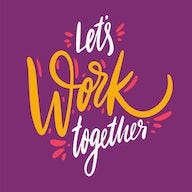This Should Be Your First Step Before Writing Your Book
Whether you write fiction or nonfiction, the very first thing you should before you even set pen to paper (or fingers to keyboard) is to know and understand for whom you are writing. Finding your ideal reader will allow you to create the marketing plan for your book (another early step you should take) and to set your goals and develop your author platform. What story are you trying to tell, what message are you trying to send, and what do you hope your readers will get from your book? No matter the genre of your book, you are not writing for everybody, but for a specific type of reader. You want to target your book only to a certain kind of person, and that is the one who is your ideal reader.
What is an Ideal Reader?
Your ideal reader is not the same as my ideal reader. Stephen King’s ideal reader is not J.K. Rowling’s ideal reader who is not James Baldwin’s ideal reader or is not Malcolm Gladwell’s ideal reader. The ideal reader for a fiction book is probably not the same ideal reader for a business book.
The first component of defining your ideal reader is the genre you have decided for your book. While most authors focus on one specific genre, many others write and publish in more than one genre. Defining your genre gives your ideal reader a general idea of what to expect from your book. Having a fixed genre also helps when categorizing your book and writing the metadata. You can then target the definition of your ideal reader to that chosen genre.
Your ideal reader is the person for whom you are creating your work. Your ideal reader is the person most likely to buy, enjoy, and receive some type of benefit from your book. Your ideal reader is not everyone, so taking the time to define that person will give you a starting point and a target.
For fiction writers, developing an ideal reader is very similar to defining a character. When you define the characters in your novel, you include very detailed information so that your reader can actually make a picture in their mind what that character looks like, the things that character likes and dislikes, and what that character acts like. Once you have defined the ideal reader for your novel, you should keep that description top-of-mind as you write and prepare the promotions and marketing for your book.
Nonfiction writers also should define their ideal reader. In the case of nonfiction, however, your ideal reader might actually be your ideal client or customer, the person who will most benefit from the solution you are providing. Your book is usually targeted towards either promoting your products or services, or it defines your goal to teach a concept or influence how your reader thinks about a specific topic or cause.
If you are looking for a publisher’s agent, knowing your ideal reader will go a long way to helping you market yourself and your book. Unless you are already well-known or a celebrity, you will usually have to work hard to become a client for an agent. For nonfiction authors, knowing your ideal reader shows a traditional publisher that you know who your target market is, and that information will be included in your book proposal. For fiction authors, knowing your ideal reader and having a built-in market with your email list and social media networks will give you a better chance of finding the right agent.
Self-Publishing or Indie Publishing
What is the Difference?medium.com
Four Benefits You Receive by Defining Your Ideal Reader
One of the primary reasons to take the time to develop and put in writing the description of your ideal reader is that doing so helps to improve your writing. All writing helps to improve your writing, but if you’re going to spend time “just writing,” this activity has a very specific purpose and several benefits. Once you have defined your ideal reader, you can more effectively target your marketing efforts.
Your ideal reader profile will help you to decide where and how to promote your book and find people to add to your email list. What Facebook Groups should you search? What LinkedIn profiles should you connect with? What types of lead magnets for your email list should you develop?
Knowing the demographics of your ideal reader helps you to visualize the components of your author brand, such as your book cover, your fonts, the metadata for your book, and what specific social media outlets to target.
When you have your ideal reader defined, you are in a better position to work with a book marketer or book publicist. These professionals will be better able to provide you with the best service possible because they will know exactly how to position your book.
Knowing your ideal reader and your target market will help you to get exposure for your book while attracting the attention of the kind of people who are looking for the type of books that you write.
About Detroit Ink Publishing
In 2008, right in the middle of the Great Recession, I started my first company, Writing It Right For You (WIRFY), an…medium.com
Your Primary Audience vs Your Secondary Audience
Your ideal reader of course describes your primary audience, the people to whom you are specifically writing your book. But you also have a secondary audience: those people who not only read your book but who also recommend your book and otherwise influence those who may be in your primary audience.
If you are an author of children’s books, of course you are writing for a specific child’s age group, your primary audience. But you are also marketing your book to your secondary audience, the parents or grandparents who will actually buy your book for the child.
If you are the author of a how-to nonfiction book, your ideal reader is the person who is actually looking for that knowledge. But your ideal reader and the secondary audience also include those who could leave reviews for your books or recommend your book to their network.
If you would like to keep up with everything we’re doing at Detroit Ink Publishing (DIP) and our other group of companies Your Business Your Brand Creatively (YB2C), I invite you to sign up for our (almost) weekly email newsletter. We promise No Spam! You can join the email list here.
My company offers editing, formatting, cover design, copywriting, publishing, ghostwriting, and book and author marketing services in packages customized for each client.
If you would like to discuss a potential publishing project, you can schedule a 30-minute consultation at this link. After your initial consultation, our team will be prepared to develop a customized quote and project plan for you.





